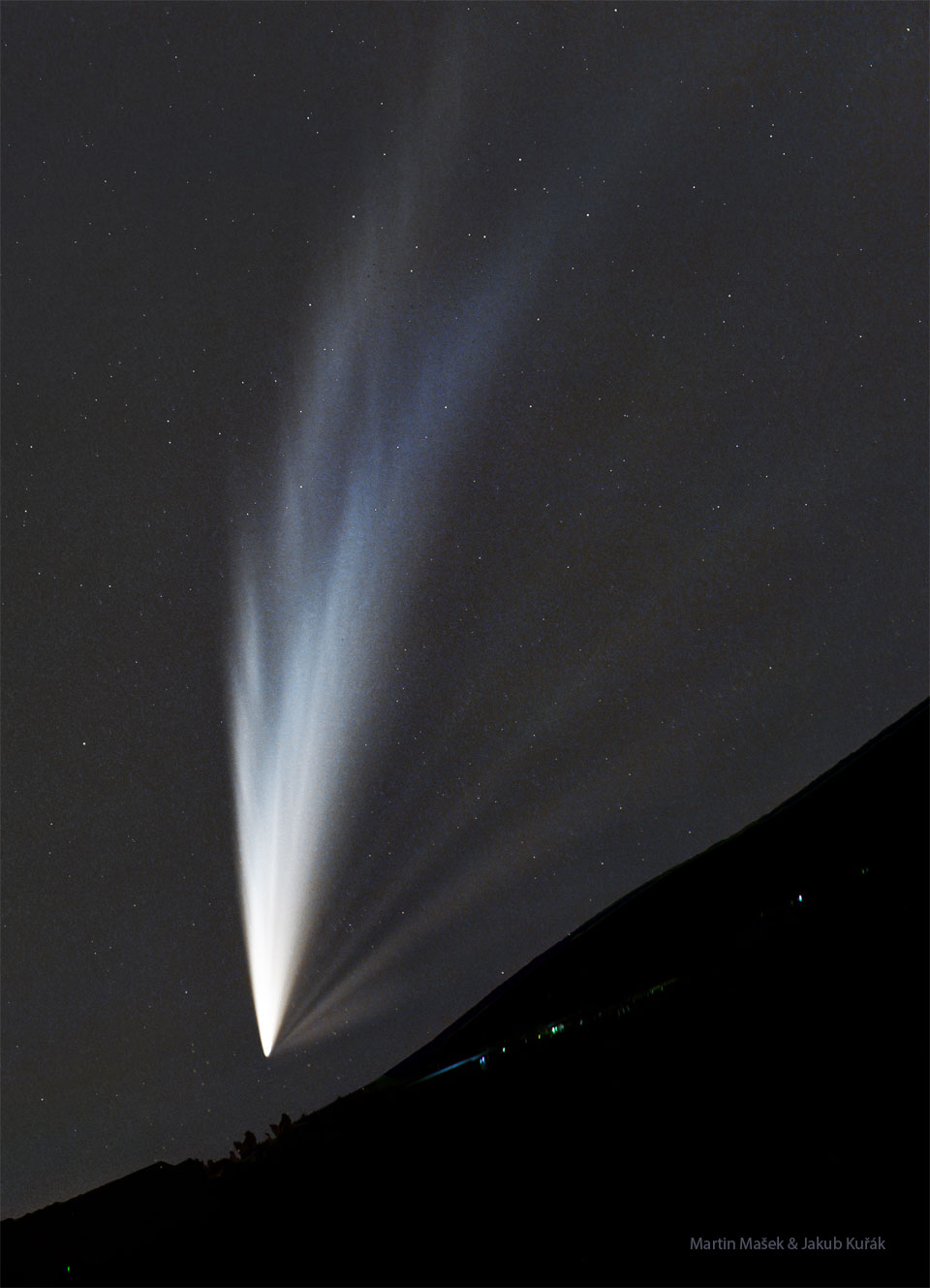G 3 ATLAS 彗星的許多尾巴
The Many Tails of Comet G3 ATLAS

來源:Martin Mašek
(FZU, Czech Academy of Sciences)
&
Jakub Kuřák|發表日期:2025-01-26
為什麼這顆彗星有這麼多尾巴?C/ 2024 G 3 (ATLAS)彗星在過去兩週裡出現了幾條長而複雜的尾巴,從地球南半球可以看到。許多觀測者報告說,他們在日落後沒有任何光學輔助裝置的情況下,在西方地平線上方看到了這顆令人印象深刻的彗星。在五天前從智利帕拉納爾天文臺上方的黑暗天空中捕捉到的特寫圖片中,至少出現了六條不同的尾巴。 出現多條尾巴的一個可能原因是彗核旋轉時排出了塵埃和氣體。太陽複雜的太陽風向外推動也可能是原因之一。兩週前,ATLAS 彗星巨大的冰山狀彗核似乎在最接近太陽時破裂。 不幸的是,ATLAS 彗星及其尾部預計將在未來幾周內大幅減弱。 您的天空驚喜APOD 在您生日時刊登了什麼照片? ( 1995 年後)
原文:Why does this comet have so many tails? C/2024 G3 (ATLAS) has developed several long and intricate tails visible from Earth's southern hemisphere over the past two weeks. Many observers reported seeing the impressive comet without any optical aid above the western horizon just after sunset. At least six different tails appear in the featured image captured five days ago from the dark skies above Paranal Observatory in Chile. One possible cause for the multiple tails is dust and gas being expelled from the comet's rotating nucleus. The outward push of the Sun's complex solar wind may also play a role. The huge iceberg-like nucleus of Comet ATLAS appears to have broken up near its closest approach to the Sun two weeks ago. Unfortunately, Comet ATLAS and its tails are expected to fade significantly over the coming weeks. Your Sky Surprise: What picture did APOD feature on your birthday? (post 1995)
※ 本文由萌芽機器人自動轉貼自每日一天文圖(Astronomy Picture of the Day,APOD),原文為英文,正體中文是透過 DeepL 翻譯及 OpenCC 進行自動處理,內容僅供參考,若有任何錯誤之處還請見諒!
關於每日一天文圖:每日一天文圖網站是美國國家航空暨太空總署與密西根理工大學提供的服務,網站每天提供一張影像或圖片,並由天文學家撰寫扼要說明其特別之處。